As a paintball enthusiast, you might be wondering what a paintball is made of. In this comprehensive guide, we will answer all of your questions about the construction and materials of a paintball. We will also provide some useful tips on how to take care of your paintballs and make them last longer. So, whether you are just starting out in the sport of paintball or you have been playing for years, read on to learn more about these fascinating little balls!
Overview Of Paintball History
Paintball dates back to the 1970s, when it was first used as a training exercise for military and law enforcement. The game quickly gained popularity and by the mid-1980s, there were an estimated 500 paintball fields in operation across the United States. Today, paintball is played by millions of people around the world and is a popular sport for both recreational and competitive purposes.
There are two main types of paintballs: those made for use with pump-action markers and those made for use with semi-automatic markers.
Paintballs are typically made of gelatin capsules that contain non-toxic, water-soluble dye. The gelatin shell is meant to break upon impact and release the dye, which will mark the target and show that it was hit.

Paintballs are typically sold in sizes of 0.68 or 0.50 caliber. The size of the paintball corresponds to the size of the marker’s barrel threading. For example, a paintball with a diameter of 0.68 inches will require a marker with a barrel threading of 0.689 inches. Paintballs are also available in different grades, which refers to the quality of the gelatin shell and fill material. Grade A paintballs are considered to be the highest quality, while grade C paintballs are considered to be lower quality.
Paintballs typically have a shelf life of two years, but this can vary depending on the type of paintball and storage conditions. Paintballs should be stored in a cool, dry place out of direct sunlight. [1]
There are some things to bear in mind when purchasing paintballs. First, consider the type of marker you will be using and make sure to purchase paintballs that are compatible with your marker. Second, decide what grade of paintball you would like to purchase. Grade A paintballs are typically more expensive, but they offer better performance and durability. Third, consider the size of the paintballs you need. 0.68 caliber is the most common size, but if you are using a pump-action marker, you may need to purchase 0.50 caliber paintballs. Finally, make sure to check the expiration date on the paintballs before purchasing them.
What Is In Paintballs?
The ingredients in a paintball have to meet certain standards before they are used in manufacturing.
The shell is made of gelatin and is designed to break upon impact. It is important that the shell is strong enough to withstand being shot from a paintball gun but also brittle enough to break upon contact with a target.
There are many different types of fillings that can be used in paintballs but the most common type is oil-based paint. Other types of fillings include water-based paints and dye-based paints.
The roundness of a paintball is important for two reasons. First, it ensures that the paintball will travel through the air in a straight line. Second, it prevents the paintball from breaking inside the gun barrel and causing a mess.
Paintballs are typically made from one of two materials: polyethylene or polycarbonate. Polyethylene is the most common type of material used to make paintballs because it is inexpensive and easy to work with. Polycarbonate is a more expensive option but it is much stronger and less likely to break inside the gun barrel.
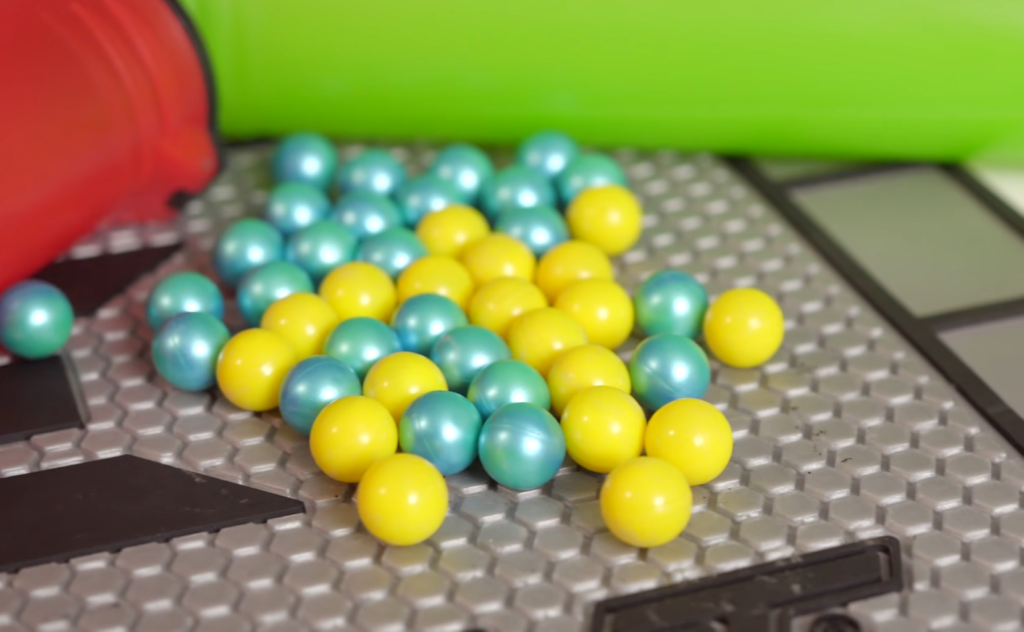
The Outer Shell
The vast majority of paintballs are made of gelatin.
When mixed with water, it forms a semisolid gel. Gelatin is also used to make food like Jell-O, marshmallows, and gummy bears.
Paintballs were originally made with pig skin gelatin because it was the cheapest animal collagen available. However, many paintball companies have switched to using fish-based gelatin because it is less expensive and doesn’t produce an allergic reaction in some people as pork-based gelatin does.
Gelatin has several properties that make it ideal for use in paintballs. It’s relatively inexpensive, it’s easy to mold into different shapes, and it has a smooth surface that is less likely to cause injury than a harder material.
The gelatin shell is also relatively fragile, which is why paintballs are designed to break open upon impact. When the shell breaks, the gel inside is released and leaves a bright mark on whatever it hits. This makes it easier to keep track of hits and eliminates the need for players to physically tag each other with their hands or markers.
One downside of gelatin shells is that they can melt in hot weather. This can cause problems with storage and transportation of paintballs in warm climates. Some companies have addressed this issue by developing shells made of alternative materials that don’t melt as easily.
Paintballs are typically round, but they can also be found in other shapes like ellipses and ovals. The size of a paintball also varies depending on the type of marker that it will be used with. Most markers use either .68-caliber or .50-caliber balls, although some high-end markers can use balls as small as .40 caliber.
The outer shell of a paintball is usually colored white, although some companies offer shells in other colors like yellow, pink, or even clear. The color doesn’t affect the performance of the ball, but it can make it easier to see against certain backgrounds.
What’s On The Inside?
So, we’ve established that the outside of a paintball is made of gelatin. But what exactly is on the inside? The common belief is that paintballs are filled with paint, but this isn’t actually the case. Most paintballs are filled with a substance called “polyethylene glycol” or “PEG” for short. PEG is a viscous liquid that is used in many different industries, including cosmetics and food production. It’s also non-toxic and biodegradable, which makes it safe to use in paintballs.
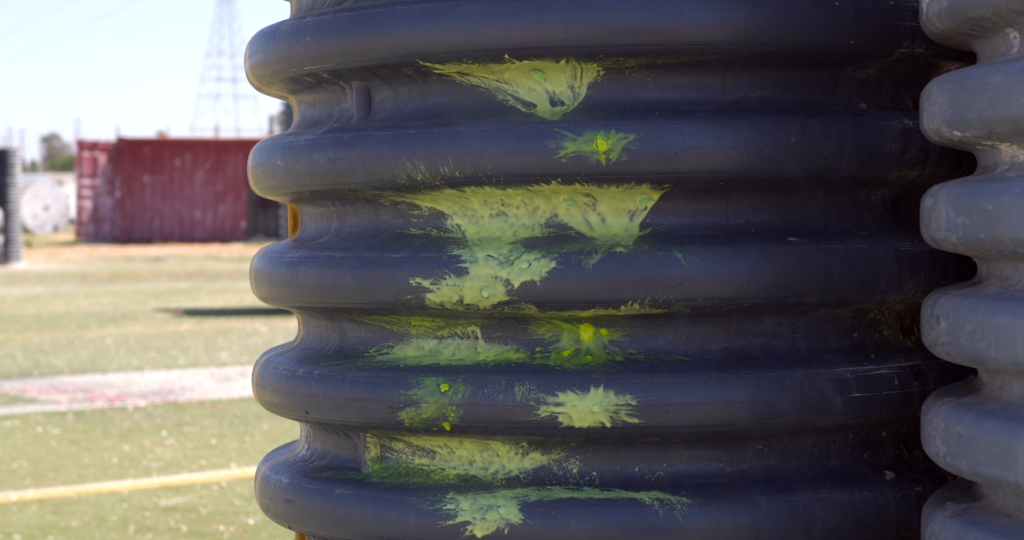
There are other substances that can be used as fillers for paintballs, but PEG is by far the most common. Some of the other substances that have been used include mineral oil, vegetable oil, and even baby formula! However, these days PEG is the filler of choice for most paintball manufacturers. [2]
One final note on paintballs: they do not expire. Paintballs can be stored for years and still be usable. So, if you find a good deal on paintballs, don’t hesitate to stock up!
How Are Paintballs Made?
Paintballs are made of a gelatin shell filled with paint. The shell is made of gelatin because it is a substance that breaks easily and does not cause injury when it comes into contact with the human body. The paint inside the shell is also non-toxic and water-soluble, so it will not cause harm if it comes into contact with skin or clothing.
The manufacturing process of paintballs begins with the creation of gelatine shells. Gelatin powder is mixed with water to create a liquid mixture which is then placed into molds. Once the mixture has set, the molds are opened and the newly formed gelatine shells are removed. These shells are then dried to remove any excess moisture.
The Manufacturing Process
The manufacturing process of paintballs has remained relatively unchanged since the sport’s inception in the early 1980s. The three main ingredients in a paintball are pigment, gelatin, and glycerin.
The pigment is what gives the paint its color. Inexpensive pigments are made from food-grade dyes, while more expensive ones use heavier metals like iron oxide or titanium dioxide.
Gelatin is what makes up the shell of the paintball. It is a protein derived from animal collagen and is used in many food and cosmetic products. Gelatin is what gives the paintball its spherical shape and makes it breakable on impact.
Glycerin is a thick, clear liquid that is used in many food and cosmetic products. It is added to paintballs as a lubricant to keep the gelatin from sticking to the manufacturing equipment. Glycerin also helps to keep the paintball from breaking too easily.
Making the paint
The first step in making paintballs is to mix the pigment with glycerin. The ratio of pigment to glycerin will determine the color of the paint. Once the pigment and glycerin are mixed, the gelatin is added and the mixture is heated until it turns into a liquid.
Next, the liquid is poured into molds that are the same size and shape as paintballs. The molds are cooled so that the mixture solidifies and takes on the shape of the mold. Once the paintballs have cooled completely, they are ready to be packaged and shipped.
Paintballs must be brightly colored so that they are visible when they hit their target; otherwise, players would have no way of knowing if they were hit or not. The most common colors are white, yellow, orange, and red.
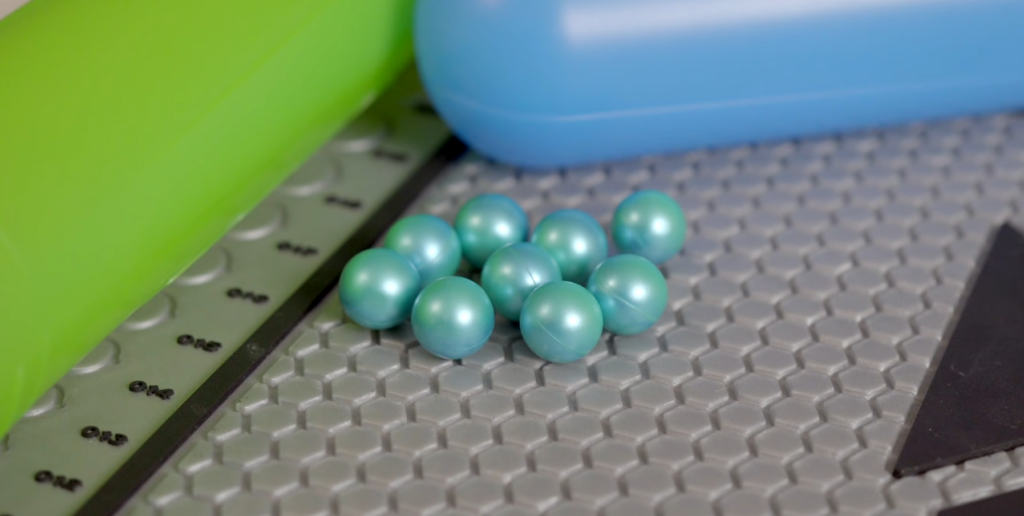
There are two types of paintballs: those that are biodegradable and those that are not. Biodegradable paintballs break down into organic matter over time and do not leave behind any harmful chemicals. Non-biodegradable paintballs do not break down and can remain in the environment for years. Paintballs that are not biodegradable usually contain heavy metals like lead or mercury, which can be harmful to the environment.
Encapsulation
The final step in the manufacturing process is encapsulation. This is when the paintball is surrounded by a thin layer of shellac or another type of sealant. The purpose of this layer is to keep the paint from drying out and to prevent the paintball from breaking too easily. Once the paintballs have been encapsulated, they are ready to be used.
Tumbling and drying
After the paintballs have been encapsulated, they are ready for tumbling. Tumbling is when the paintballs are placed in a large drum and rotated. This helps to remove any imperfections on the surface of the paintball and gives them a smooth finish. After tumbling, the paintballs are dried so that they do not absorb moisture from the air.
Drying
The final step in the manufacturing process is drying. After the paintballs have been encapsulated and tumbled, they are dried so that they do not absorb moisture from the air.
If they are exposed to heat or moisture, the gelatin shell will soften and the paint inside will leak out. Paintballs that have been damaged in this way are not usable and must be thrown away. It is important to check the expiration date on paintballs before using them. Paintballs that are too old can become brittle and break easily. When choosing paintballs, it is best to err on the side of caution and choose ones that are closer to their expiration date rather than risk using ones that might be past their prime.
Inspection and packaging
After the paintballs have been dried, they are ready for inspection. The paintballs are checked for defects and sorted into bags according to size and color. Once they have passed inspection, the paintballs are ready to be shipped to stores all over the world.
Paintball is a relatively safe sport, but there are still some risks involved. Players should always wear protective gear, including a mask, gloves, and long sleeves and pants. It is also important to stay hydrated and take breaks as needed to avoid heat exhaustion. With proper precautions, paintball can be enjoyed by people of all ages.
Paintball is a fun and exciting sport that can be enjoyed by people of all ages. With proper safety precautions, it is a safe sport for everyone to enjoy. Now that you know what a paintball is made of, you can be sure that you are using quality products that will not damage your equipment. Choose paintballs that are fresh and close to their expiration date to ensure the best possible experience. Most importantly, have fun and stay safe!

Quality Control
To ensure that every paintball is up to par, they go through a process of quality control. After the paintballs are made, they are put into cases and then shipped off to be tested. The first thing that’s checked is the weight and size of the ball. It’s important that each ball is exactly the same size so that they will all fit in the gun barrels and fly through the air at the same speed. If even one ball is slightly bigger or smaller, it could mess up the entire game.
The next thing that’s checked is the shell thickness. This is important because if the shell is too thin, it will break easily and you’ll end up with paint all over your clothes. But if it’s too thick, the ball won’t break when it hits someone and you’ll just end up wasting paint.
Finally, they check the fill. The fill is what makes the paintball explode and splatter paint everywhere. If it’s not mixed correctly, the ball might not break at all or it could break too early. [3]
After the balls go through quality control, they are packaged up and sent to stores all over the world. So next time you’re playing paintball, you can rest assured that each ball has been tested to ensure that it’s perfect for playing.
How To Clean and Store Paintballs
Paintballs are made of food-grade ingredients, so they’re safe to handle and eat. However, if you don’t clean them before storage, they can go bad. Here’s how to clean and store your paintballs:
To clean paintballs, simply rinse them off with warm water. You can also use mild soap if desired. Be sure to dry the paintballs completely before storing them.
Paintballs can be stored in a number of ways. One option is to keep them in their original packaging until you’re ready to use them. Another option is to transfer the paintballs into an airtight container such as a zip-top bag or tupperware container.
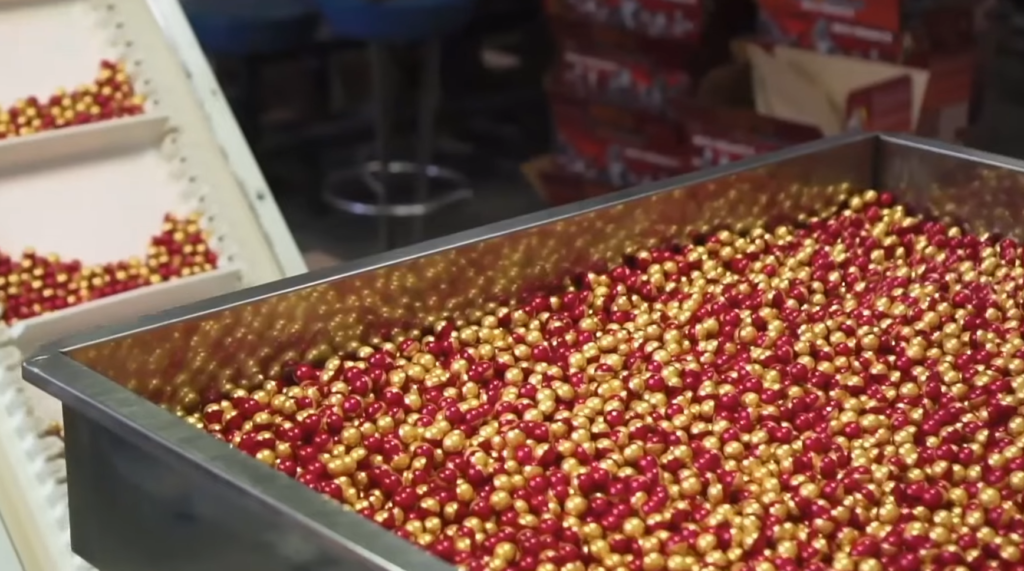
Can You Eat Paintballs?
This is a common question with a simple answer: no, you cannot eat paintballs. They are made of ingredients that are not meant to be ingested and can actually be quite harmful if swallowed. So, if you’re ever tempted to take a nibble out of one of those colorful little spheres, resist the urge!
What about if the paintball accidentally breaks inside your mouth? Well, it’s not going to taste great (to put it mildly), but as long as you spit it out right away and rinse your mouth out thoroughly with water, you should be fine. Just to be on the safe side, though, it’s always best to consult with a doctor or poison control center if this does happen.
How Do You Wash Paintball Paint Off Your Clothes?
One of the most important things to know about paintball is how to wash paintball paint off your clothes. If you don’t, it will set and be very difficult to remove. Here are a few tips:
- Soak the stained clothing in cold water as soon as possible.
- Don’t use hot water, as this will set the stain.
- Use a mild detergent or soap and gently rub the fabric together.
- You can also try using a pre-treater like Shout or Zout before washing. Just remember to follow the directions on the package.
- Wash the clothing in cold water on a gentle cycle.
- Avoid using the dryer until you are sure the stain is gone.
Hopefully, these tips will help you remove any paintball stains from your clothing. Just remember to act quickly and be gentle while scrubbing the fabric.
Are Paintballs Environmentally Friendly?
The short answer is yes, paintballs are definitely environmentally friendly! The long answer is a little more complicated than that.
Paintballs are made of biodegradable materials, which means that they will eventually break down and decompose. However, the time it takes for a paintball to decompose can vary depending on the conditions in which it is stored.
Paintballs that are stored in a cool, dry place will take longer to decompose than those that are stored in a warm, humid environment. The type of paint used also plays a role in how quickly a paintball will decompose.
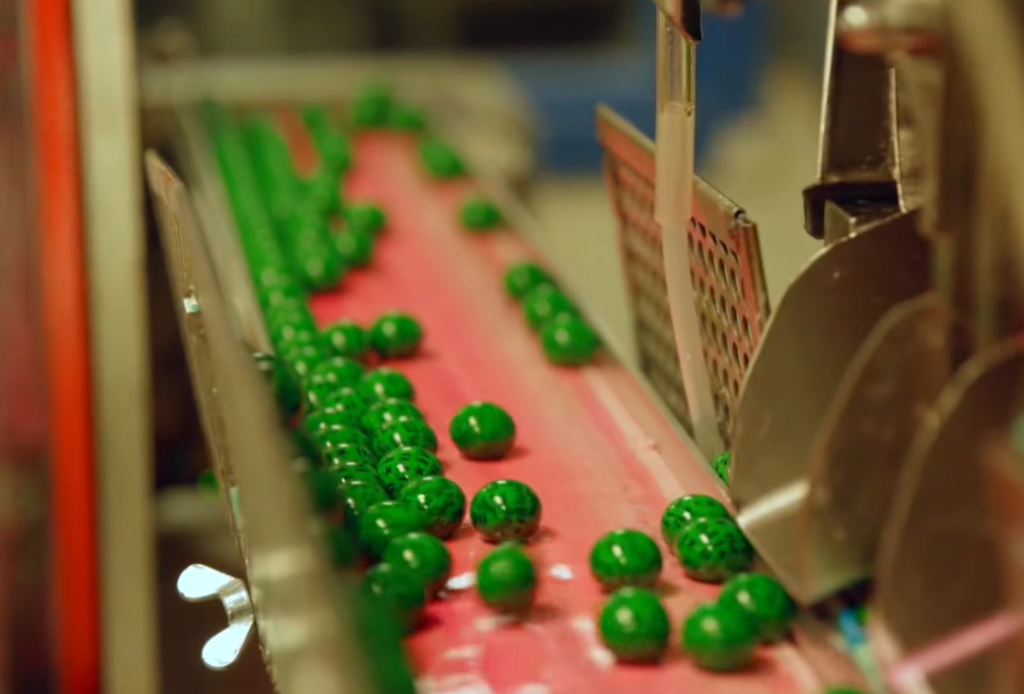
Some types of paint will break down more quickly than others, but all types of paint will eventually decompose.
So, if you’re looking for a way to be more environmentally friendly, consider switching to paintballs! They may not decompose overnight, but they will eventually break down and won’t pollute the environment like other types of balls.
Can You Fill Your Own Paintballs?
The simple answer is yes, you can fill your own paintballs. However, we don’t recommend it unless you have the proper equipment and knowledge. Filling your own paintballs can be dangerous if not done correctly. Plus, it’s time-consuming and messy. If you’re serious about playing paintball, we recommend investing in a good quality premade paintball.
There are a few different types of materials that make up a typical paintball: the shell, the filling, and the coverstock.
The shell is usually made of gelatin or cellulose acetate butane (CAB). The gelatin provides flexibility to the ball so that it doesn’t break upon impact. CAB is a little harder and is less likely to break, but it can shatter if hit in the right spot.
The filling is typically made of polyethylene glycol (PEG) or glycerin. PEG is a thick liquid that doesn’t freeze and is less likely to leak out of the ball. Glycerin is a little thinner but is more likely to leak.
The coverstock is what gives the paintball its color and finish. It’s usually made of dye and pigment mixed with resin or shellac. The type of coverstock you use will depend on your personal preference and the type of paintball marker you’re using.
Are Red Paintballs Illegal?
The answer to this question is a bit complicated. In short, red paintballs are not illegal, but there are some restrictions on their use.
Red paintballs are typically only used for target practice and training exercises. They are not allowed in official tournament play because they can be difficult to see against certain backgrounds.
Some Paintball fields also do not allow red paintballs because they can leave permanent stains on clothing and equipment. If you’re unsure about the rules at your local field, it’s always best to check with them before playing. [4]
Have you ever wondered what exactly a paintball is made of?
Most commonly, they are composed of three main ingredients: a colorant, a binding agent, and a propellant.

The colorant is what gives the paintball its distinctive color. The most common colorants are titanium dioxide and iron oxide. Titanium dioxide is a white pigment that is used to produce light-colored paintballs. Iron oxide, on the other hand, produces darker colors like red, black, and brown.
The binding agent is responsible for holding the colorant and propellant together. The most commonly used binding agents are glycerin and gum arabic. Glycerin is a clear, odorless liquid that helps keep the paintball’s ingredients together while also making the paintball more slippery so it can break upon impact. Gum Arabic, on the other hand, is tree sap that gives the paintball a sticky texture.
The most common propellants are carbon dioxide and nitrogen. Carbon dioxide is used in most recreational paintball guns because it is readily available and relatively inexpensive. Nitrogen, on the other hand, is often used in high-end tournament paintball guns because it provides more consistent results.
FAQ
What is the shell of a paintball made of?
The shell of a paintball is made of gelatin. Gelatin is a protein that comes from animal collagen. It’s what gives Jell-O its jiggly texture. Paintballs are typically made with pig skin collagen, but you can also find vegan options made with plant-based ingredients. [5]
Do paintballs hurt?
This is probably the most common question people have about paintballs. And the answer is…it depends. Paintballs are designed to break upon impact, so if you get hit in a sensitive area, it’s going to hurt. But if you’re hit in a non-sensitive area, like your leg or arm, it’s not going to hurt nearly as much. Of course, this all depends on how hard you’re hit and at what distance. The closer you are to the person shooting at you, the more likely it is that you’ll feel some pain. [6]
What is the outside of paintballs made of?
The majority of paintballs have a shell that is made of gelatin. The main reason for this is because gelatin is water-soluble, so it will break down and dissolve when it comes into contact with water. This means that if you are shot with a paintball, the gel inside will burst and release the paint, making it easier to clean up afterwards.
There are also some eco-friendly options on the market that use plant-based materials instead of gelatin. However, these tend to be more expensive and may not be as effective at breaking upon impact.
Inside the shell, there is a fill material that is usually made of polyethylene glycol (PEG). This substance is non-toxic and water-soluble, so it is safe to use. The fill will also usually contain dye, which is what gives the paintball its color.
There are a few different types of paintballs on the market, each with their own benefits and drawbacks. Oil-based paintballs are the most common type and tend to be the cheapest. However, they can leave stains on clothing and may not break as easily upon impact.
Water-based paintballs are less likely to stain clothing but may not break as easily either. These are good options for those who want to avoid any potential mess.
Finally, there are also biodegradable paintballs available. These are made with materials that will degrade over time, making them more environmentally friendly. However, they tend to be more expensive and may not last as long as other types of paintballs.
What ingredients are in a paintball?
The answer may surprise you, but a paintball is actually made up of mostly food-grade ingredients. The main component of a paintball is oil, which helps keep the ball from shattering upon impact. Paintballs also contain color pigment and water to help create their distinctive appearance. A small amount of compressed air is also used to help keep the ball firm and ensure that it doesn’t break open too easily. Finally, a thick outer shell helps to protect the inner contents of the paintball and keeps it from being damaged during gameplay. [7]
While most people think of paintballs as being made up of dangerous chemicals, the reality is that they are actually quite safe for human consumption. In fact, many people who play paintball will often eat paintballs that have broken open during gameplay. While there is always a slight risk of choking, the chances of this happening are very slim.
Useful Video: How Paintballs Are Made
Conclusion
In conclusion, a paintball is made up of several different materials, all of which work together to create the perfect shot. The shell is usually made of gelatin or polymer, and contains the paint inside. The fill is what gives the paintball its color, and can be made from a variety of different materials. Finally, the CO₂ gas helps to propel the paintball out of the gun and towards your target.
With all of this in mind, you should now have a better understanding of what a paintball is made of and how it works. Thanks for reading!
References
- https://www.actionpackedpaintball.com/history-of-paintball/
- https://paintball4all.com/what-are-paintballs-made-of/
- http://www.madehow.com/Volume-6/Paintball.html
- https://paintballhive.com/updated-are-red-paintballs-illegal-2022-the-real-truth/
- https://en.wikipedia.org/wiki/Paintball_equipment
- https://www.paintballpark.co.uk/blog/does-paintball-hurt/
- https://www.aspcapro.org/resource/paintball-ingestions-and-treatment-options

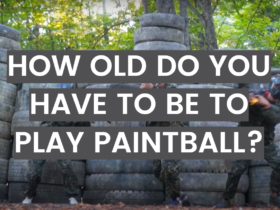
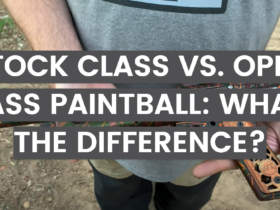


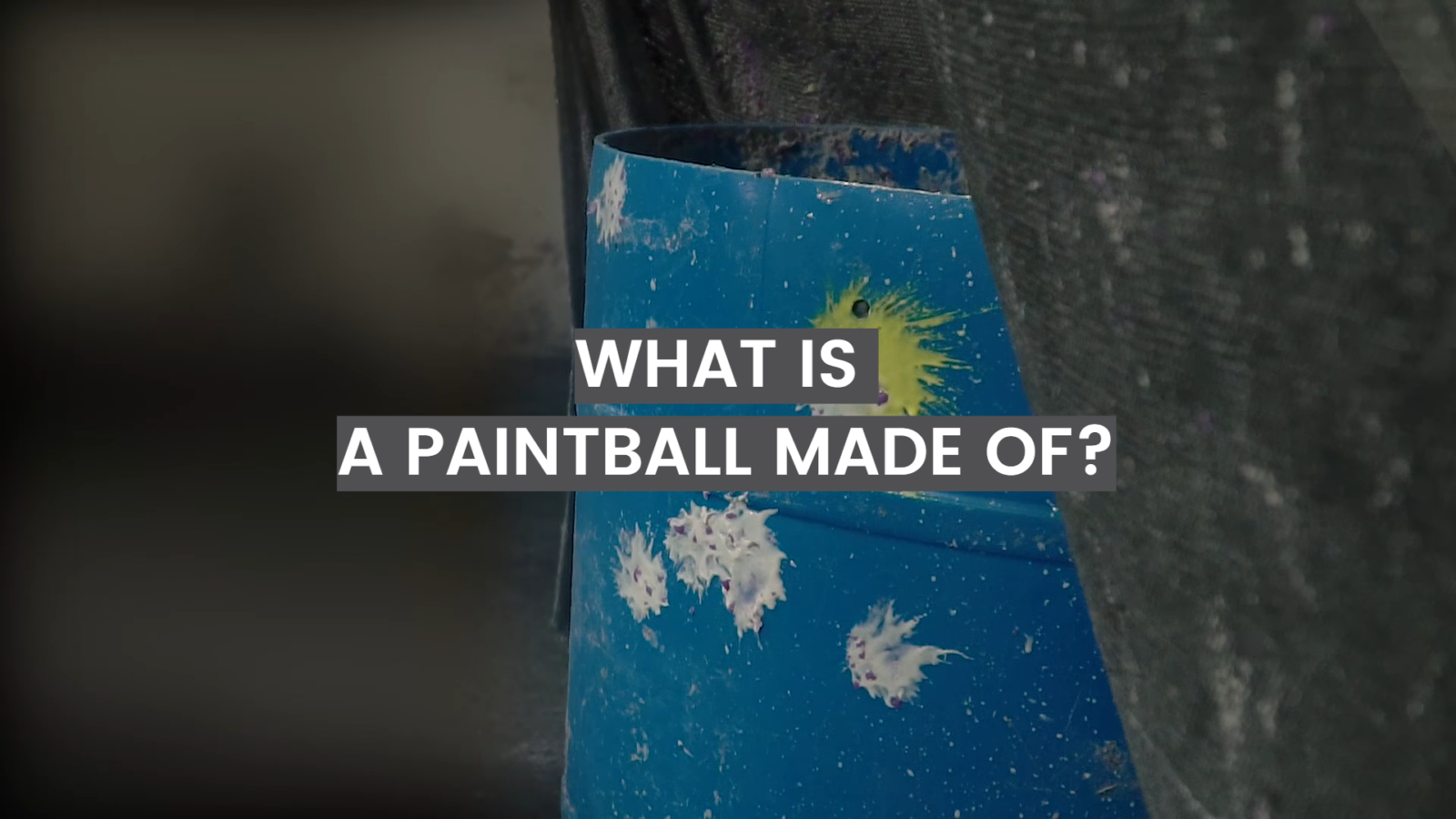


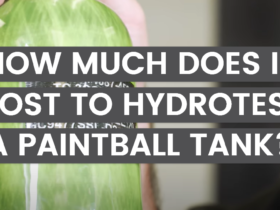
Leave a Review